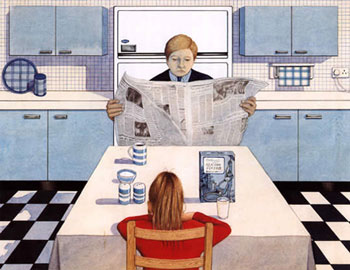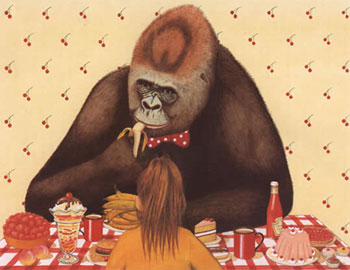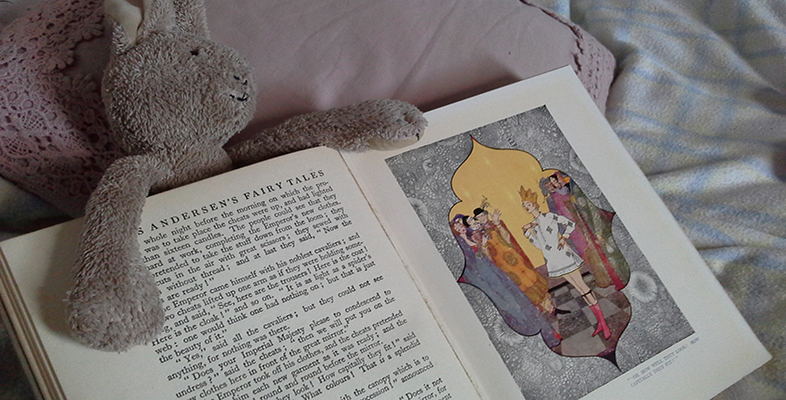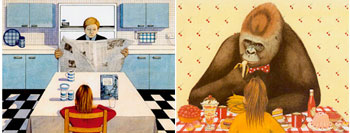7 Analysing images: composition and symbolism
The author of Hansel and Gretel, Anthony Browne, is well known for his stories which depict gorillas in human roles. The gorilla motif recurs throughout Browne’s work, gorillas being a long-term passion of his. The next activity looks at how mood and relationships may be conveyed to the reader in pictures, using two pages from Anthony Browne’s Gorilla (2002). This is the story of a young girl, Hannah, living with her father who is too busy to pay her much attention. She longs for a gorilla; when given a toy one, it comes to life and takes her off on a series of nocturnal adventures, bringing warmth and security into her life. Her relationship with her father also improves as a result.
Activity 10
Part 1
The illustration below is from Anthony Browne’s book Gorilla, and shows the central character, Hannah, having breakfast with her father.

Based on this illustration, what kind of relationship do you think exists between father and daughter?
Consider how the illustration conveys the relationship between Hannah and her father.
What aspects of the way it is drawn, the use of colour and the composition do you think express the mood of the relationship between father and daughter? Write down three aspects of the picture that you think contribute to the overall effect.
Hold the mouse cursor over each number on the illustration to see some of the ways that it might tell the story of the relationship between Hannah and her father.
The illustration below comes later in the book Gorilla. It shows Hannah sitting opposite her toy gorilla, who has come to life.

How do you think the mood differs in this picture compared to the previous one? What would you say is the relationship between Hannah and the gorilla?
Answer
At this stage in the story, the gorilla has taken Hannah on an outing to the zoo and then to the cinema. They have had a wonderful time. The relationship between them appears to be far warmer than that between Hannah and her father.
Part 2
Now compare the two illustrations.
What differences are there in (1) the use of colour, (2) the use of composition, and (3) the symbolism of objects?
Click on the link to ‘Next’ to see how colour, composition and symbolism feature in the two illustrations.
Discussion
The meanings readers take from any text – whether children or adults – may vary according to their own experience, knowledge, cultural background and so on. The meanings of an image can never be pinned down with 100% accuracy (and some would say that this is true of the meaning of words too). However, these examples do seem to show that the choices of illustrators have a very important role to play; not just in conveying mood and atmosphere, but also in suggesting relationships and plot developments, enhancing and interpreting the story as told in words.

